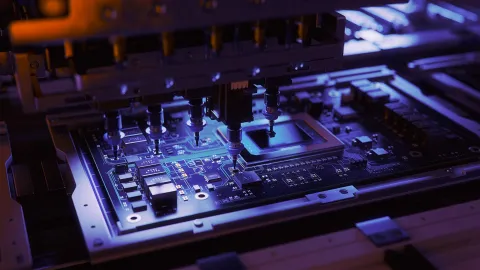Futureproofing banks’ IT infrastructure to drive agility and business growth in the Middle East and Africa

We live in a world that is changing. New technology, changing regulations and evolving customer expectations are among the challenges facing banks in the Middle East and Africa today. To make the challenge, more challenging, the pace of change is accelerating. Future proofing IT investments is crucial for banks aiming to increase business agility and drive growth.
In MEA, future-proofing IT investments involves adopting technologies that not only meet current needs but also anticipate future challenges and opportunities. According to a KPMG survey, 86% of banking executives believe that digital transformation is essential for future growth. This sentiment is echoed across the industry, with banks increasingly focusing on technologies that enhance operational efficiency, customer experience, and resilience. This is where augmented core and data comes into its own.
Augmented core: The backbone of modern banking
Augmented core refers to the enhancement of traditional core banking systems with advanced technologies such as artificial intelligence (AI), machine learning (ML), and big data analytics. This approach allows banks to swiftly adopt, integrate, and swap out technologies as needed, ensuring they remain agile and competitive. By leveraging augmented core, banks can streamline operations, reduce costs, and enhance customer experiences.
In the Middle East and Africa, the adoption of augmented core and data is particularly significant. The region's unique challenges and opportunities require tailored solutions that address local needs while aligning with global standards.
Let's start with data.
Data: The new currency
Data is often referred to as the new currency in the digital age. For banks, the ability to harness and analyze vast amounts of data is a game-changer. Data analytics provides deep insights into customer behavior, market trends, and operational efficiency. According to a recent Forbes survey, 42% of banking leaders ranked data analytics as one of their top two priorities. This underscores the importance of investing in data-driven technologies to drive growth and innovation. Data residency laws and regulatory fragmentation add complexity to cloud adoption, while talent shortages in AI and cybersecurity further slow progress.
The integration of augmented core and data technologies significantly enhances decision-making and strategic planning. AI and ML algorithms can analyze real-time data to predict market trends and customer needs with remarkable accuracy. This enables banks to make more informed decisions faster, positioning them to capitalize on emerging opportunities and mitigate risks.
Delivering personalized customer experiences
Understanding and anticipating customer needs is at the heart of successful banking. Augmented core and data technologies enable banks to deliver personalized experiences that resonate with customers. By analyzing data patterns and leveraging AI, banks can offer tailored solutions that enhance customer satisfaction and loyalty. This proactive approach not only meets current expectations but also sets the stage for future innovations.
Innovation and revenue growth
Innovation is the lifeblood of modern banking. The impact of augmented core and data on revenue growth is profound. By fostering a culture of excellence and embracing cutting-edge technologies, banks can unlock new revenue streams and drive profitability. Banks that adopt augmented core and data technologies can achieve a 20-30% increase in operational efficiency. This synergy between technology and strategy is key to achieving long-term success.
Operational resilience and agility
Operational resilience and agility are especially critical in a dynamic market of the Middle East and Africa. Augmented core provides the flexibility and scalability needed to adapt to changing conditions. For instance, during periods of high transaction volumes, cloud computing resources can be dynamically allocated to ensure seamless operations. This level of agility is essential for maintaining customer trust and ensuring business continuity.
Strategic recommendations for MEA banks
- Invest in cloud and hybrid architectures: Adopt scalable, secure cloud-native platforms with flexibility for local data residency laws and regulatory requires in MEA.
- Partner with managed service providers: Leverage expertise to accelerate migration and simplify operations.
- Develop a data-first culture: Use data analytics and AI to drive customer insights and operational efficiency.
- Focus on talent development: Upskill existing staff and attract digital talent to sustain transformation efforts.
Conclusion
Future-proofing banks' IT investments is essential for driving business agility and growth in the MEA region. Banks in MEA are increasingly recognizing the importance of integrating augmented core and data technologies to navigate local challenges and capitalize on regional opportunities. The integration of augmented core and data technologies provides the foundation for a resilient, efficient, and customer-centric banking ecosystem. By embracing these advancements, banks can position themselves for long-term success, ensuring they remain competitive and responsive to the evolving needs of their customers, while establishing leadership positions in innovation.
References:
1Forbes, Banks' IT Priorities—And What They Could Mean For Businesses In 2025
2Frank Luong, Future of Core Banking: Trends and Transformation
3Italtel, Agility and efficiency in banking services: a tailored solution for a leading Finance Multinational
4KPMG, Future-proofing banking: The enterprise transformation imperative
5SBS, Hassan Nasser, Digital Banking in Middle East and Africa: Seven Key Trends Shaping the Future



